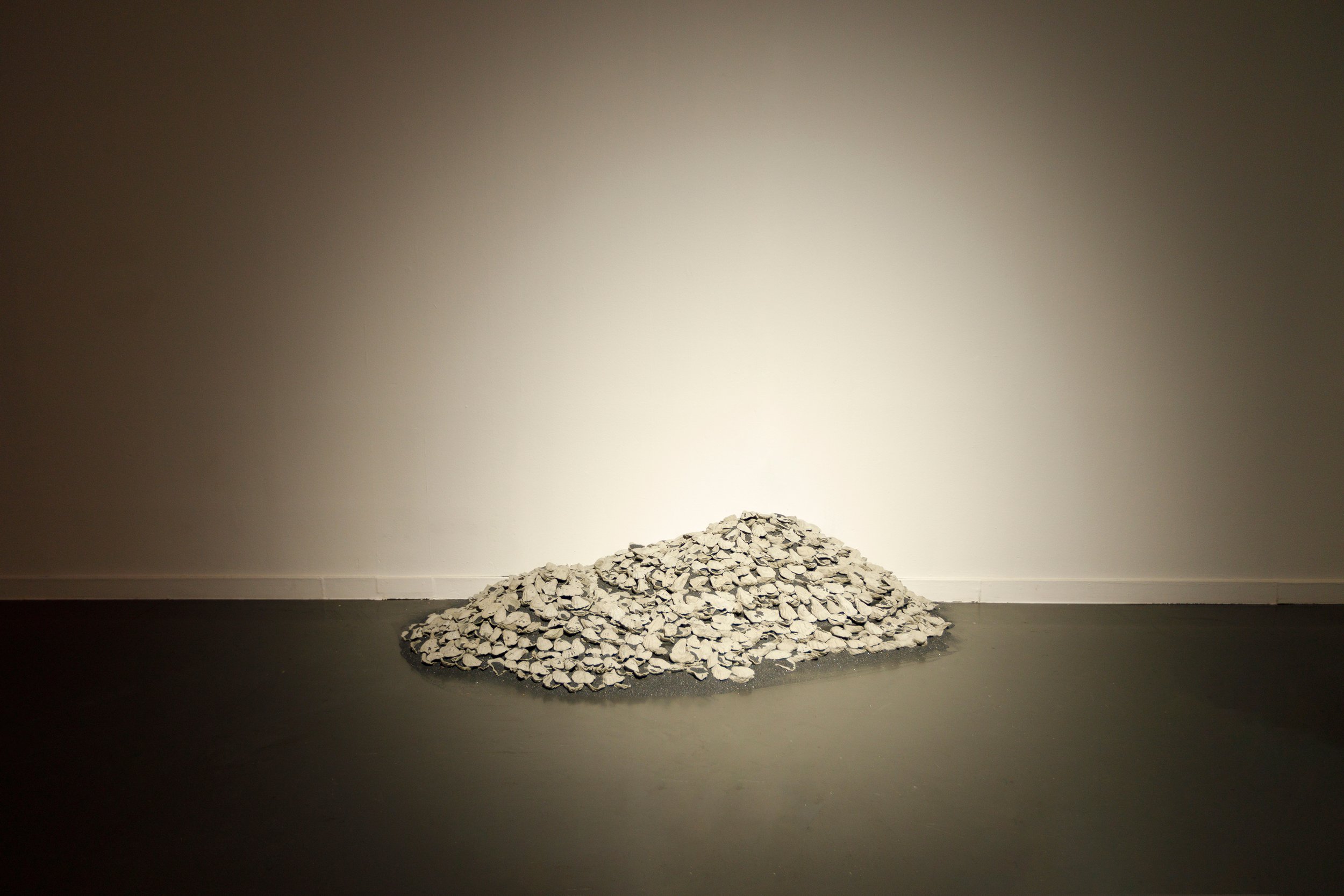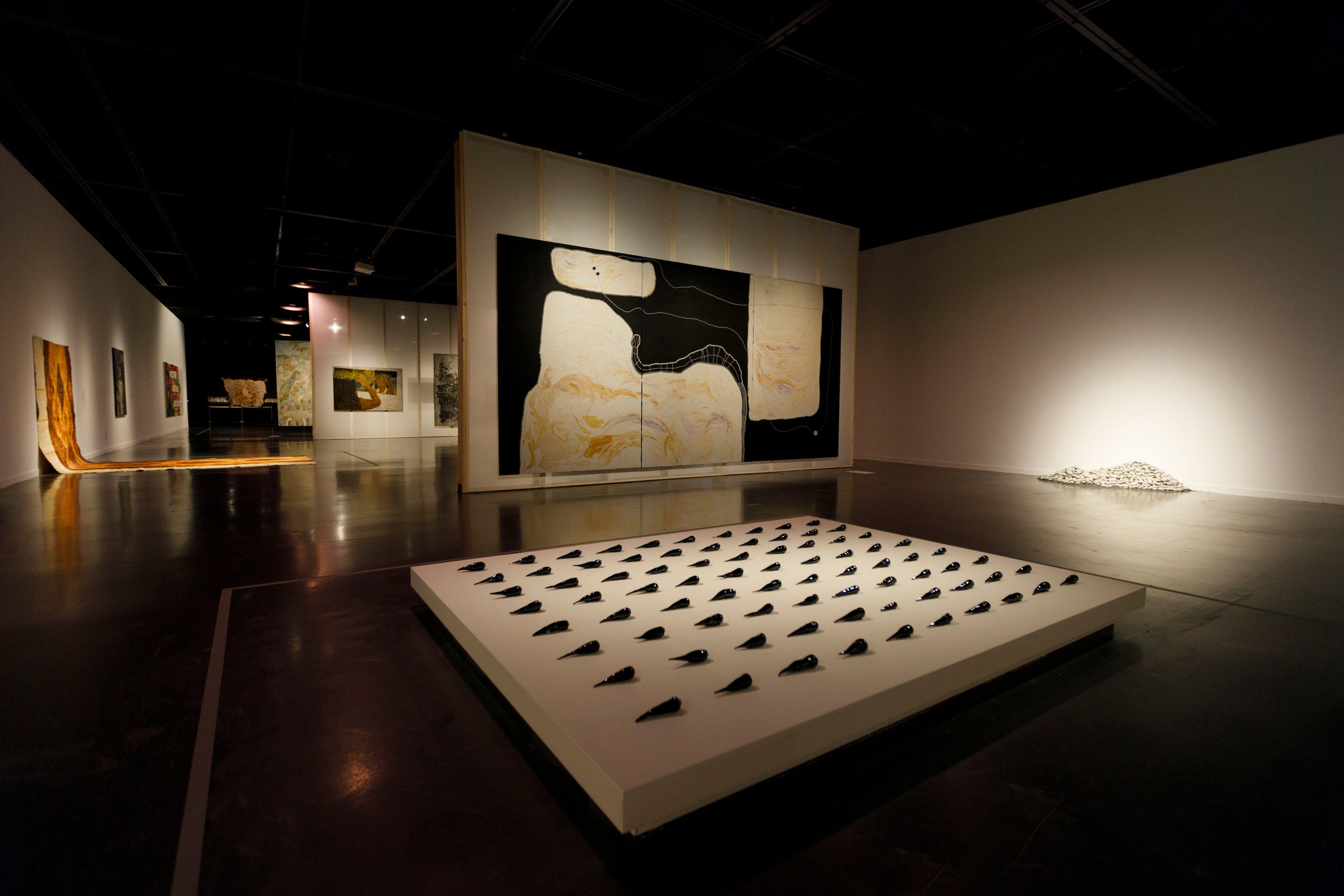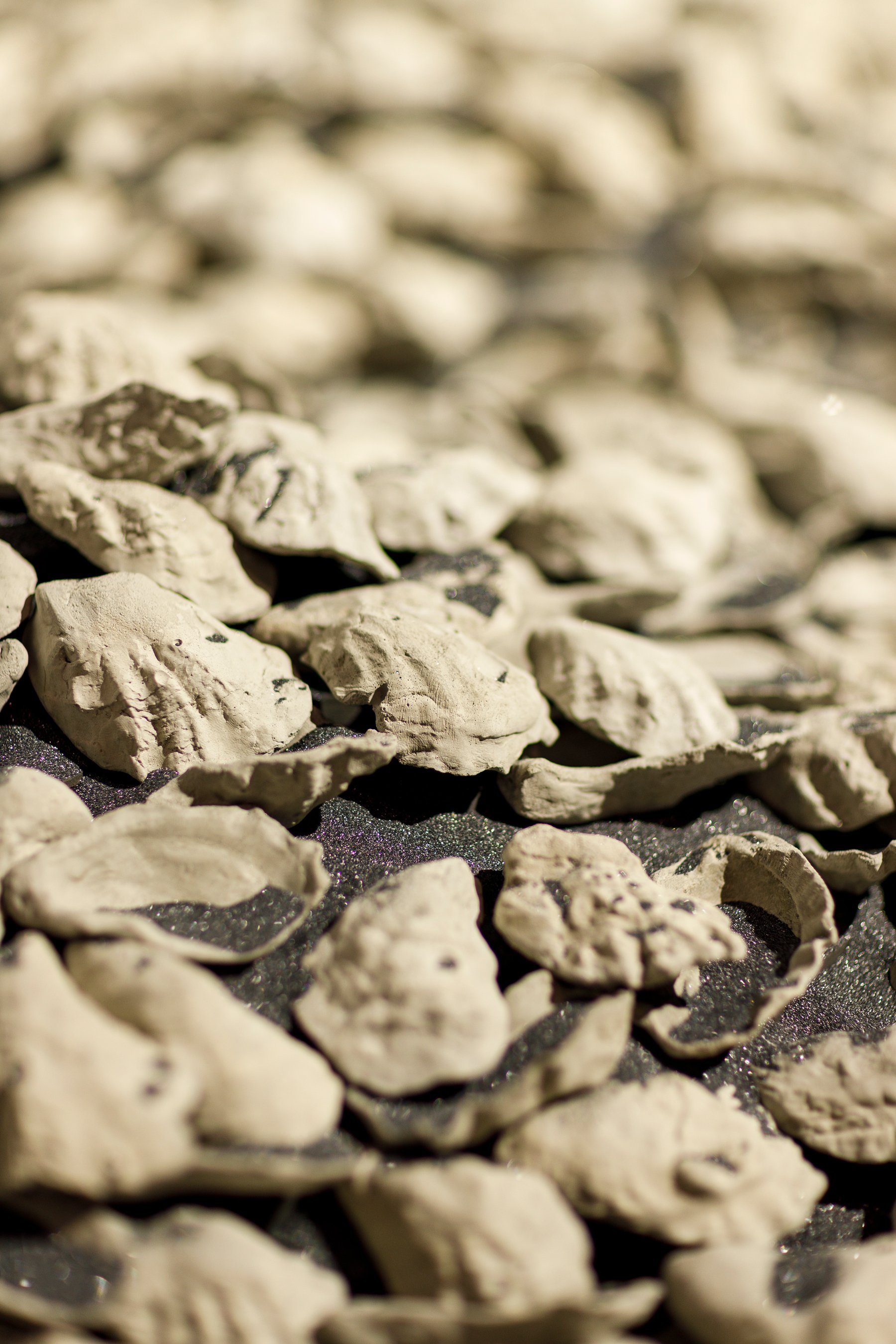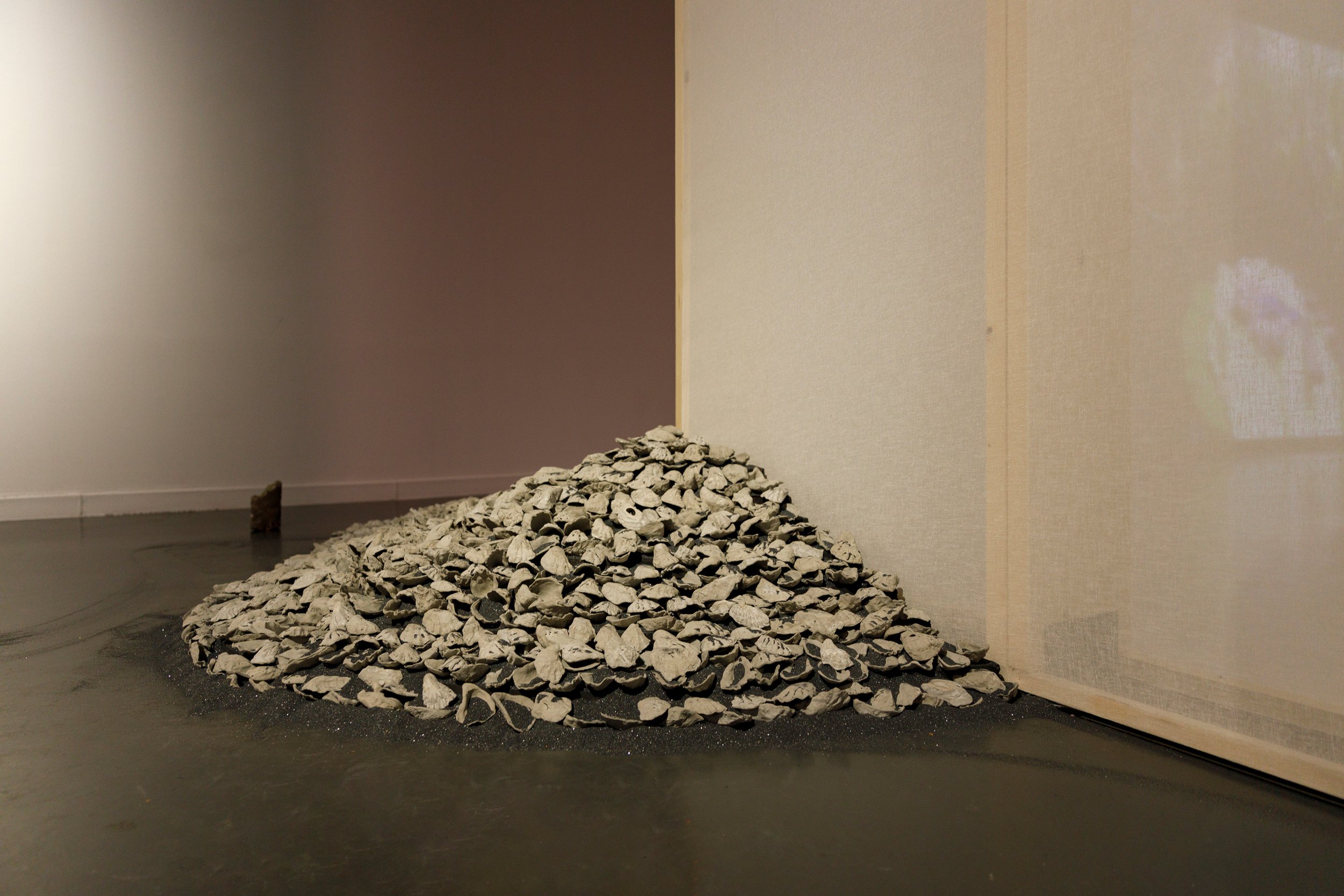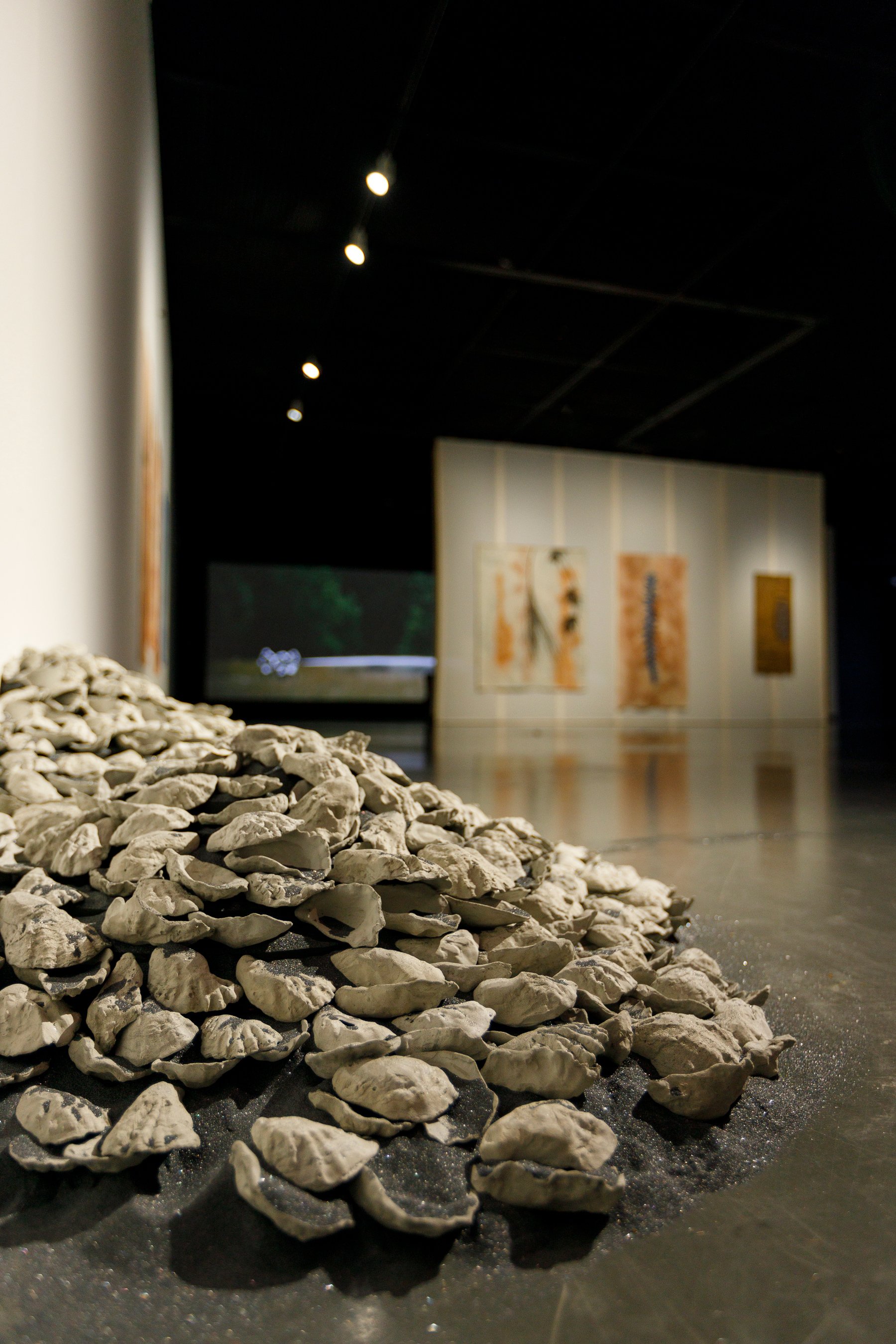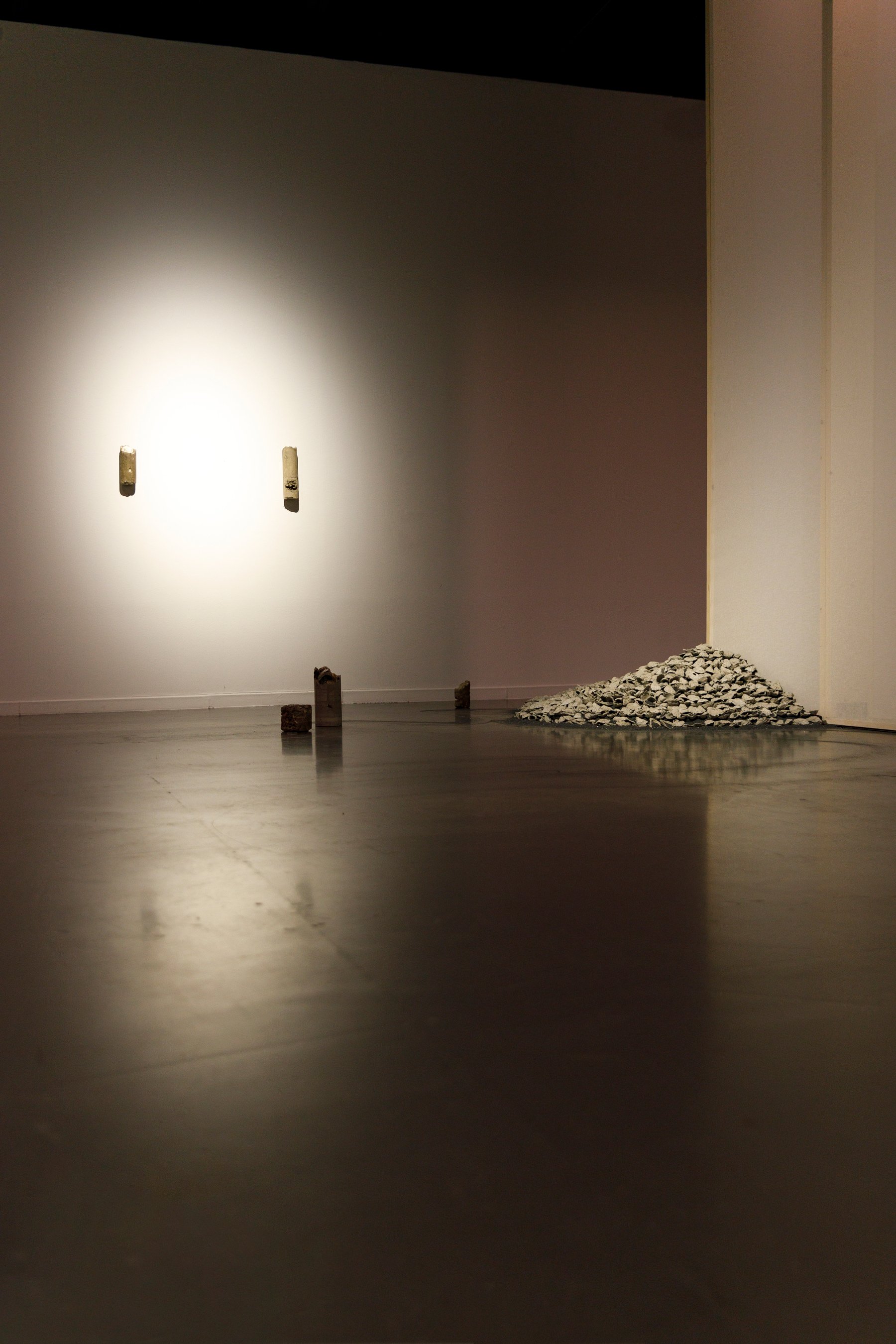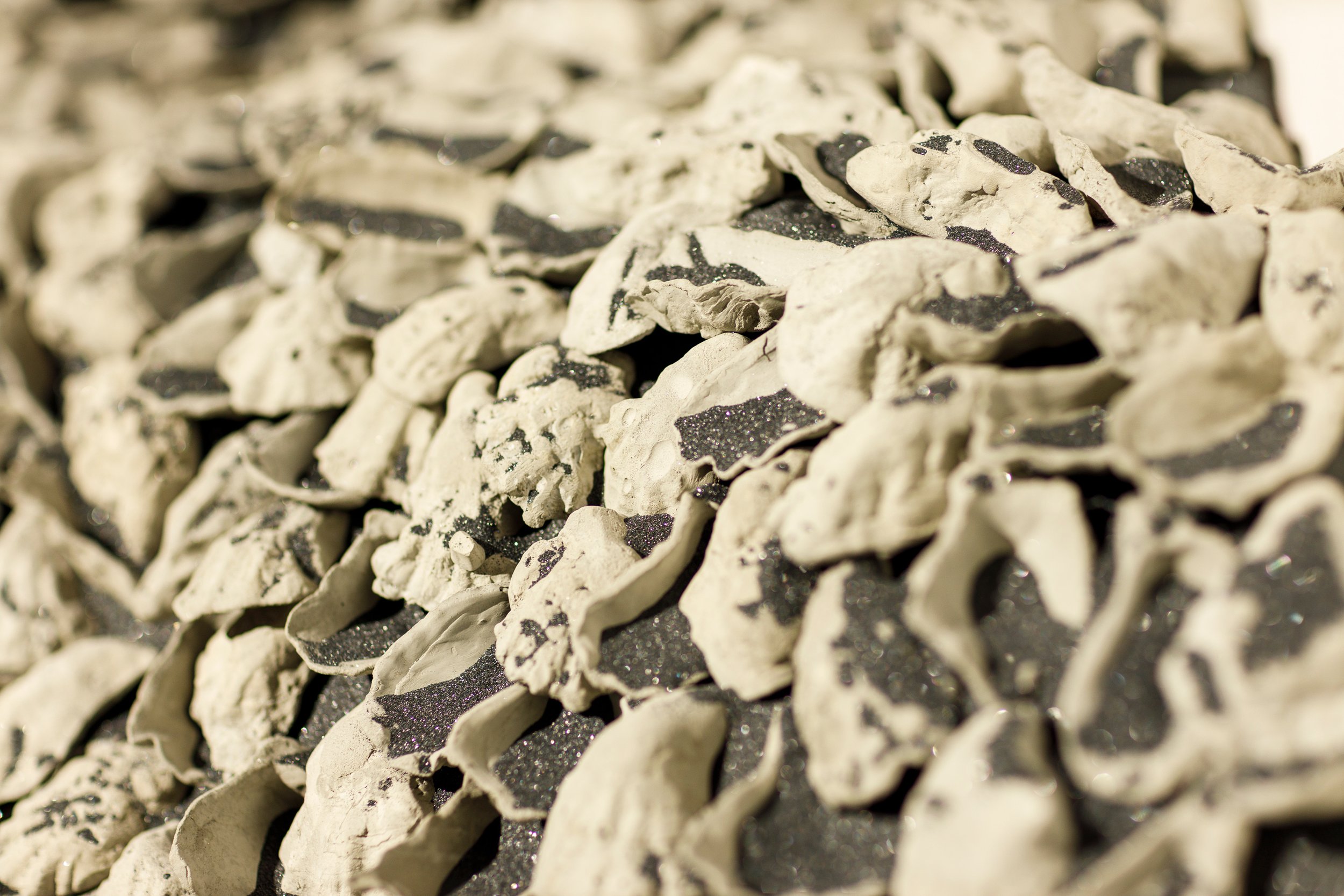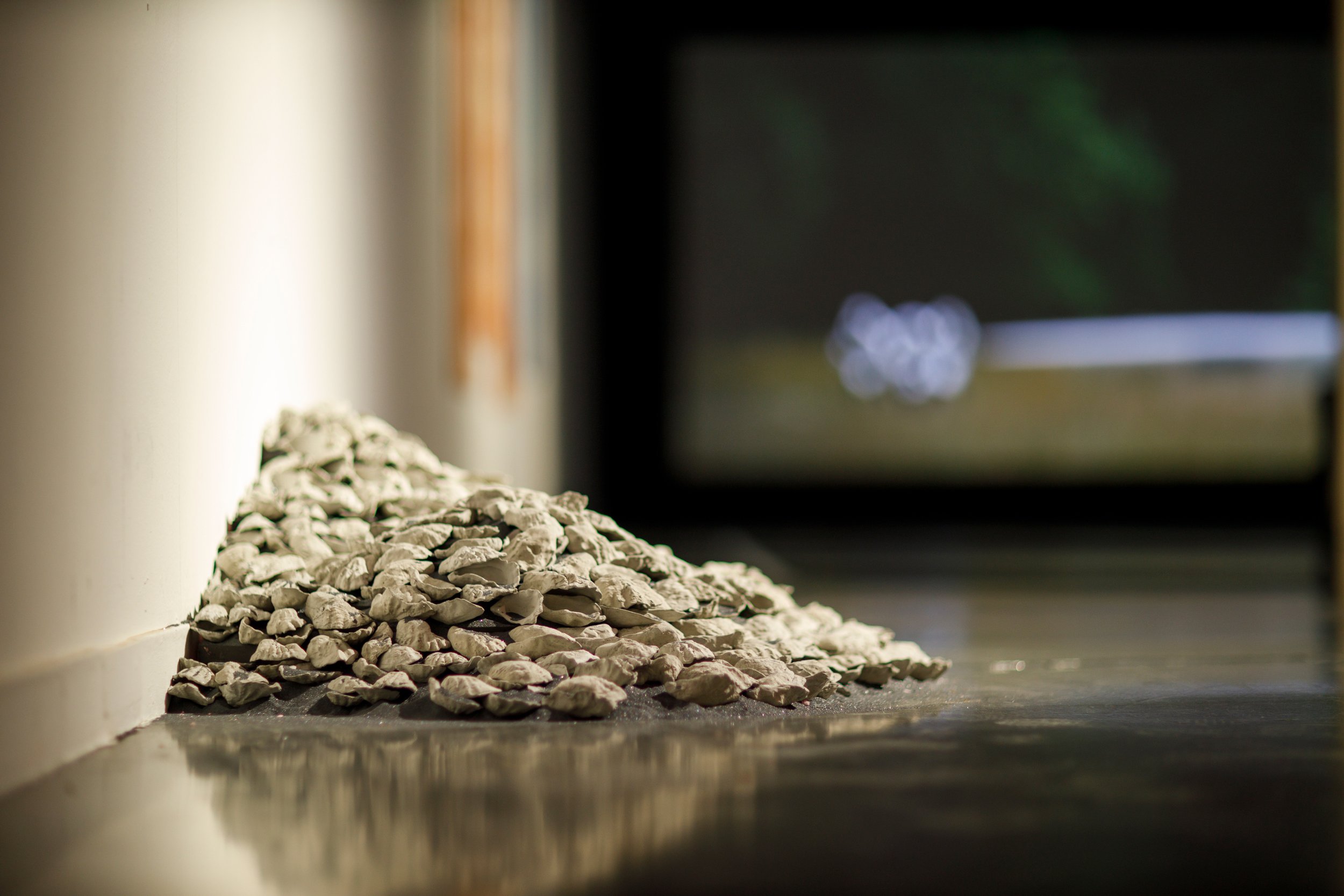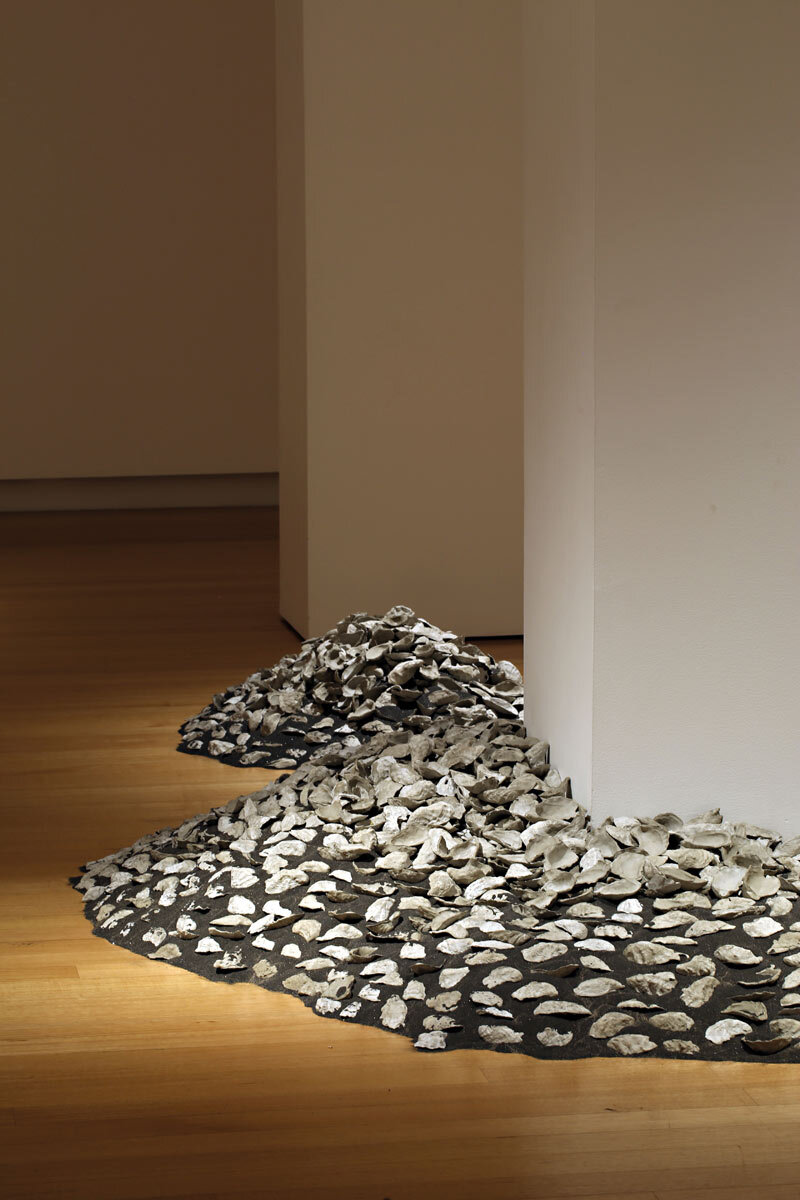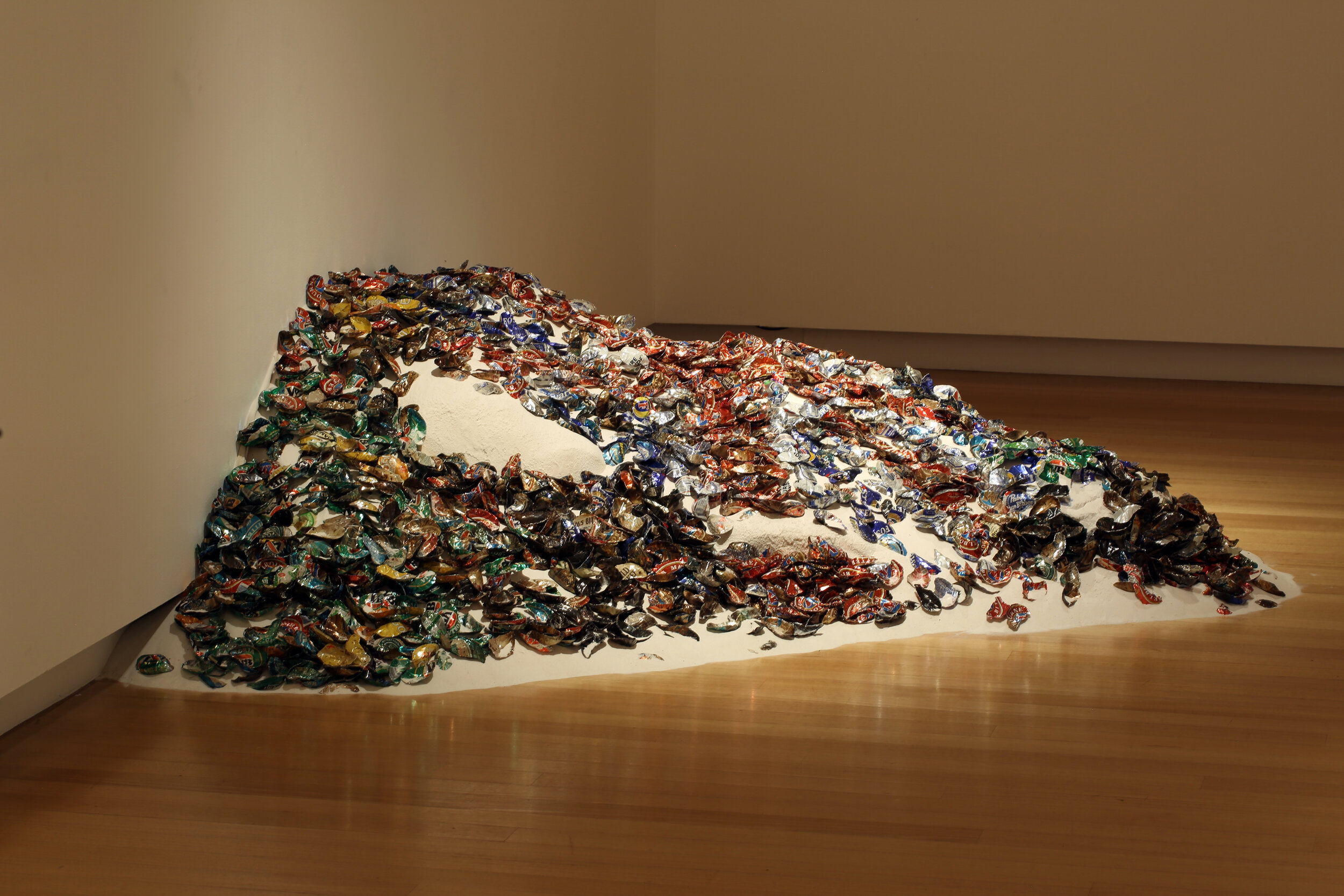Re Formation Part I, 2016 (back)
1800 hand-made concrete shells lodged in ilmenite (black mineral sand).
Dimensions variable.
Courtesy the artist and Milani Gallery, Brisbane. Documentation courtesy of QUT Art Museum from Frontier Imaginaries: The Life of Lines.
RE FORMATION Part II
2016 (front)
Used beer cans and silica sand from Minjerribah. 185 cm diameter (irregular).
Courtesy of the artist and Milani Gallery, Brisbane.
Documentation courtesy of QUT Art Museum from Frontier Imaginaries: The Life of Lines.
RE FORMATION part I & II
RE FORMATION Part I takes the form of a midden, mimicking the mounds of discarded organic matter that accumulated in Aboriginal communities. During Australia’s early colonial period, Europeans used these middens as a source of lime, which they burnt to create mortar for buildings.
In archaeological terms a midden is a mound or deposit containing shells, animal bones, and other refuse that indicates the site of a human settlement. The removal of Aboriginal architectural forms such as middens and the continued mining and excavation of sacred sites renders a landscape void of markers once used to navigate through Country.
In RE FORMATION Part I, thousands of hand-cast shells are arranged in a bed of ilmenite. It explores the foundations and cement production connected to the early lime burning industry that saw the mass burning of Aboriginal shell piles and middens throughout coastal Aboriginal communities. The work connects the historical and continuing decimation of sacred sites by mining and other commercial activities.
RE FORMATION Part II takes it’s form as a midden, with used beer cans, pressed into the shape of oyster shells and and silica sand from Minjerribah (North Stradbroke island, Queensland).
EXHIBITION HISTORY
- 경로를 재탐색합니다 UN/LEARNING AUSTRALIA, Seoul Museum of Art (SeMA), December 2021.
- Defying Empire: 3rd National Indigenous Art Triennial, National Gallery of Australia.
Curated by Tina Baum. 26 May – 10 September 2017
- Bereft, Artspace Sydney, 23 June – 10 July 2016
- Frontier Imaginaries: The Life of Lines, QUT Art Museum. Curated by Vivian Ziherl. 14 May - 14 August 2016
Documentation courtesy of QUT Art Museum from Frontier Imaginaries: The Life of Lines.
REFORMATION I at 경로를 재탐색합니다 UN/LEARNING AUSTRALIA, Seoul Museum of Art (SeMA), December 2021
Photos: Yoonjae Kim

